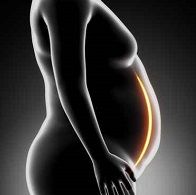Article
FDA Approves Controversial New Weight Loss Stomach Pump
Author(s):
More than one-third of the current US adult population suffers from obesity, which is the second leading cause of preventable death in the United States, according to the NIH.

More than one-third of the current US adult population suffers from obesity, which is the second leading cause of preventable death in the United States, according to the NIH.
With more research showing the harrowing effects of obesity, researchers are looking for safe and effective treatment methods.
As such, the FDA has recently approved a new and unusual weight loss device — an external pump that drains parts of the stomach’s contents after every meal.
The surgically placed tube, AspireAssist (Aspire Bariatrics), is intended for obese patients at least 22 years old with a BMI of 35-55 and who have already tried and failed to maintain weight loss through non-surgical weight-loss therapies.
The FDA approved AspireAssist following a clinical trial of 111 patients treated with the device and appropriate lifestyle therapy. After one year, patients using AspireAssist lost an average of 12.1% of their total body weight, compared to the 3.6% in the control group.
The study also showed the patients experienced small improvements in diabetes, hypertension, and quality of life — conditions typically associated with obesity.
Although officials explained this device should not be used in patients with eating disorders, many critics are dubbing the pump as “assisted bulimia.”
The device, considered minimally invasive, includes a tube that goes from the inside of the stomach and can be attached to a port on the outside of the abdomen.
A disk-shaped port valve outside the body is connected to the tube, and 20-30 minutes after consuming each meal, the patient can open the valve and drain approximately a third of the stomach’s contents at a time.
Once opened, it takes 5-10 minute to drain food matter through the tube and into the toilet.
Research showed the pump could help morbidly obese patients lose a mean of more than 12% body weight unlike most weight loss fads.
According to William Maisel, MD, MPH, deputy director for science and chief scientist in the FDA”s Center for Devices and Radiological Health, “The AspireAssist approach helps provide effective control of calorie absorption. Patients need to be regularly monitored by their health care providers and should follow a lifestyle program to help them develop healthier eating habits and reduce their calorie intake.”
The most commonly reported side effects included occasional indigestion, nausea, vomiting, constipation, and diarrhea, but the surgical placement of the gastric tube could also be associated with inflammation and tearing.
To aid in safety protocol, the device has a feature that keeps track of the number of times the drain tube had been connected to the port and automatically stops working after 115 cycles (about five-six weeks of therapy).
The patients are required to return to their physician for a check up before receiving a replacement part for the device to continue therapy.
While the device is currently on the market in Europe, the company has not yet revealed what the cost in the US might be, considering the cost for surgical implants could vary by center.




